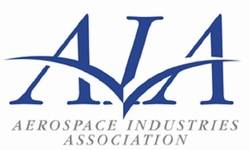"It's Not A Problem That's Coming. It's Here."
 We hear often from NATCA that large
numbers of air traffic controllers are about to retire. We've seen
industry studies that show a large cluster of airline pilots is
about to retire. But demographics are threatening shortages not
only among the people who direct and fly planes, but the people who
design and build them.
We hear often from NATCA that large
numbers of air traffic controllers are about to retire. We've seen
industry studies that show a large cluster of airline pilots is
about to retire. But demographics are threatening shortages not
only among the people who direct and fly planes, but the people who
design and build them.
The Fort Worth Star-Telegram reports about a quarter of the
637,000 aerospace workers in the US could be eligible to retire
this year, leaving companies of all sizes anticipating shortages.
The severity of the trends is being acknowledged from all corners
of the industry.
Marion Blakey ended her five year term heading the FAA last year
and took over as president and chief executive of the Aerospace
Industries Association. "It's a looming issue that's getting more
serious year by year," she says. "These are real veterans. It's a
hard work force to replace."
Frank Larkin, spokesman for the 720,000-member International
Association of Machinists and Aerospace Workers notes, "It's not a
problem that's coming. It's here."
Officials of Cessna Aircraft have mentioned difficulty in
recruiting qualified workers as a factor in recent decisions to
keep manufacturing of its former Columbia Aircraft models in place
in Bend, OR and to outsource assembly of its new light-sport 162
SkyCatcher to China.
Solving the problem will not be quick, easy or cheap. Aerospace
companies and the analysts who watch them agree US schools have
underperformed in preparing students in math and science. Colleges
and universities are turning out far too few engineering and
aeronautical graduates. Population trends have tended toward
smaller families in the US since the greying baby boomers preparing
to retire first entered the workforce.
Harry Holzer, a Georgetown University professor and former chief
economist for the US Department of Labor, tells the Star-Telegram
market forces may ultimately resolve the problem, but, "It won't be
painless, and some real adjustments may have to occur."
Those market forces, limited supply and growing demand, have
already elevated the pay of aerospace workers above other
industries, to an average of $1,153 a week, according to the
Department of Labor, but it's still proving an inadequate
incentive.
Holzer notes that, ironically, the industry which played a major
role in ending the Cold War has lost some of its cache in
peacetime. He says aerospace doesn't have the recruitment appeal it
did decades ago, and many young job-seekers regard aerospace plants
as "old-fashioned industries."
As the industry faces the loss of tens-of-thousands of loyal,
long-term employees and the reservoir of institutional knowledge
they hold, Boeing is likely to draw some scrutiny. Whatever the
company is doing, it appears to be having better success than
rivals. Boeing has managed to recruit successfully in the 18 to 29
age group, possibly buoyed by the Seattle area's reputation for
quality of life.

Lockheed Martin is working a very long-term strategy to get new
recruits. The approach includes internships, aggressive recruitment
in colleges and universities, and an outreach into public schools
to get students interested in math and sciences. Lockheed has
invited teachers to tour its plants, hoping they'll pass some of
the resulting industry insights along to their students.
 ANN's Daily Aero-Linx (12.03.25)
ANN's Daily Aero-Linx (12.03.25) ANN's Daily Aero-Term (12.03.25): CrewMember (UAS)
ANN's Daily Aero-Term (12.03.25): CrewMember (UAS) NTSB Prelim: Maule M-7-235A
NTSB Prelim: Maule M-7-235A Airborne-Flight Training 12.04.25: Ldg Fee Danger, Av Mental Health, PC-7 MKX
Airborne-Flight Training 12.04.25: Ldg Fee Danger, Av Mental Health, PC-7 MKX Aero-News: Quote of the Day (12.04.25)
Aero-News: Quote of the Day (12.04.25)




